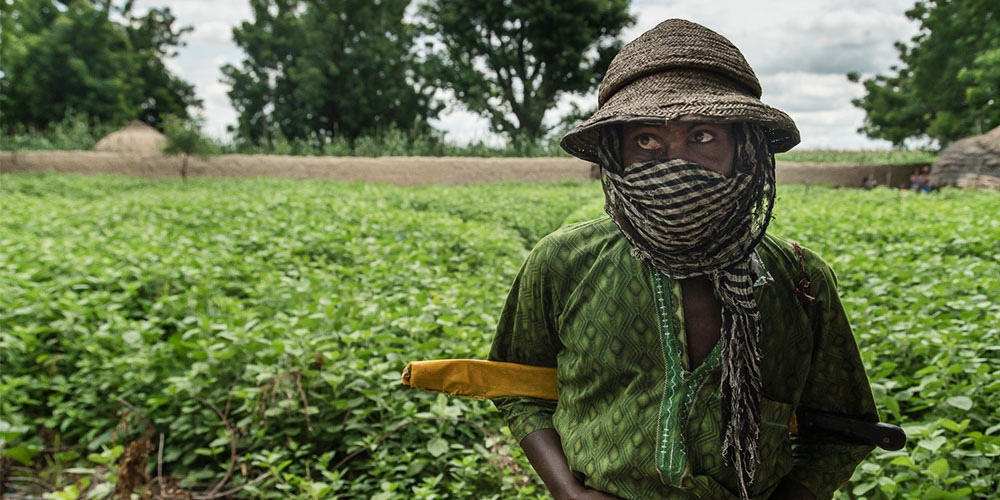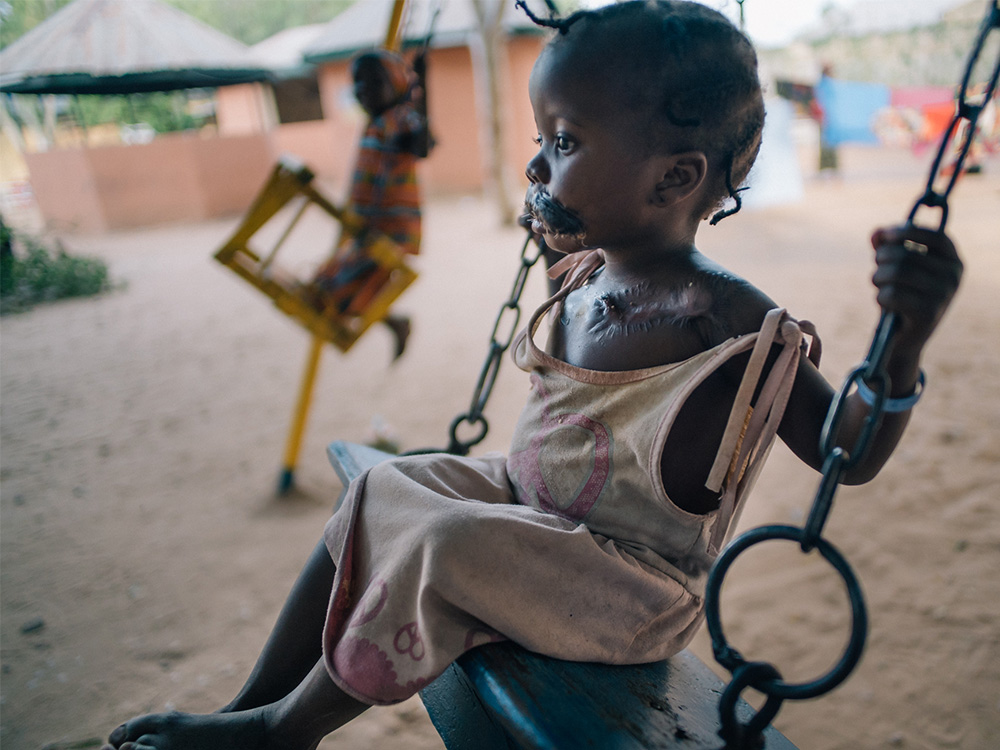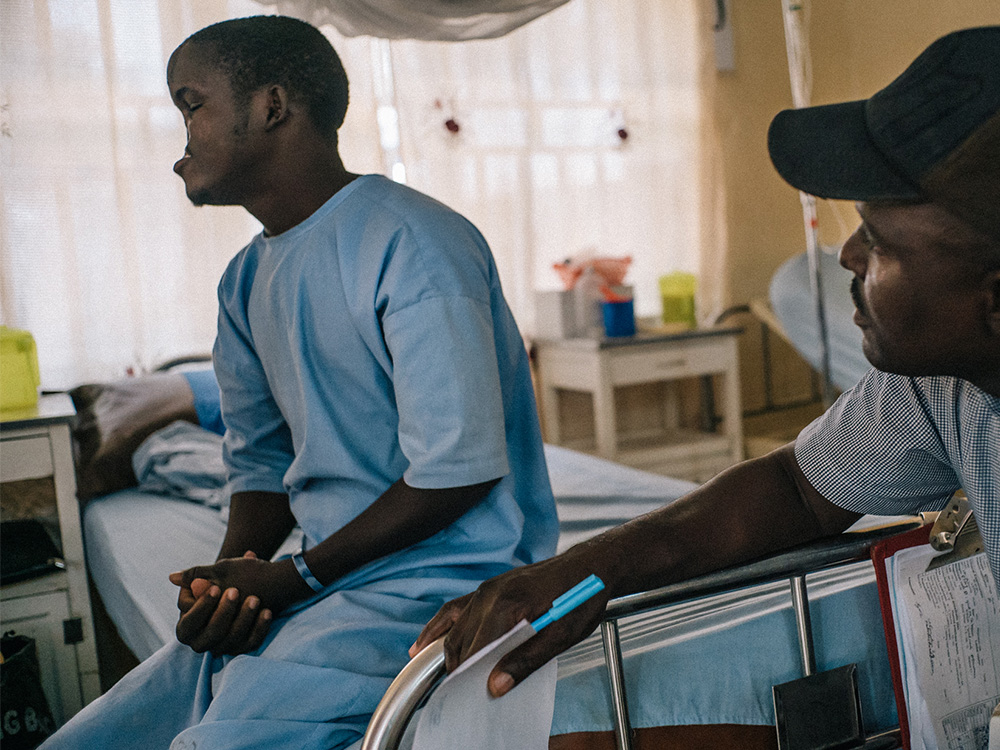Noma: giving a face to a deadly disease
On December 15, 2023, the World Health Organization officially added noma to the list of neglected tropical diseases, which will make it easier to combat and research this poverty-related disease. The Swiss Tropical and Public Health Institute (Swiss TPH) and the University of Basel both played a key role in ensuring noma was recognized in this manner.
05 February 2024 | Christian Heuss
Many people prefer to look the other way when it comes to this disease, as the sight of young children suffering from its effects is unbearable. It causes open wounds on the face and whole sections of the cheek appear to have been eaten away. Children who survive the disease remain disfigured throughout their lives and struggle with speech disorders and eating problems.
Noma typically affects children between two and six years of age. The disease starts seemingly harmlessly as sore gums and mild bad breath. At this stage, the disease would be easy to cure with a broad-spectrum antibiotic. If left untreated, the infection spreads to tissue necrosis within a few days. First soft tissues die, then cartilage structures and bones are attacked and literally eaten away by the infection.
“The time available to detect and treat the disease is extremely short,” says Peter Steinmann, epidemiologist at the Swiss TPH and the University of Basel. After just ten to twelve days, the damage done to the face is irreversible. Currently, it is estimated that nine out of ten children die from the disease because they are not diagnosed and treated in time: “By the time children suffering with the disease arrive at the health center from places with poor health care, it is often too late.”
Children who survive this stage of the disease often lose large parts of their face. Their lips are disfigured, parts of the nose area are missing, and a damaged jaw, for example, prevents them from chewing food. Without complicated operations, affected children remain scarred for life – and often stigmatized and marginalized.
Face of poverty
Noma is also called the face of poverty. This is because the disease occurs mainly in areas where there is extreme poverty, today mainly in Africa, India, East Asia, Southeast Asia and Latin America. The first clinical descriptions can be found in the records of a Flemish surgeon in the 16th century. Children in Europe suffered from noma until the 20th century, particularly during times of war and extreme poverty. Most recently, the disease has been observed in inmates in German and Soviet concentration camps.
Thanks to increased health care and a higher standard of living, noma has completely disappeared in Europe and has therefore largely been forgotten, but in other parts of the world, the disease is still prevalent. It is estimated that more than 140,000 children contract noma every year.
“Noma mainly affects people who are extremely difficult to reach and who live in remote areas,” says Steinmann. “They are people who live far from state health facilities and often fall through the cracks of poor health care.” Together with two PhD students, Anaïs Galli and Curdin Brugger, he investigated the scientific evidence on the spread of the disease as part of a study. The study was published in the scientific journal Lancet Infectious Diseases in 2022.
Exact cause is unknown
It is still unclear what causes the disease, but it probably arises as a result of a bacterial infection when the immune system is weakened. This can be due to extreme malnutrition, but also recently suffering from measles or malaria. “A lack of vitamins or minerals could also make children more susceptible to noma disease,” says Steinmann.
Thirty-two countries, led by Nigeria, have applied to the WHO for noma to be included on the list of neglected tropical diseases. This was based on the work of an international consortium of scientists, funded by the Swiss Network for International Studies, which investigated the latest knowledge about the disease. The Swiss Tropical and Public Health Institute was responsible for evaluating the epidemiological knowledge.
“Our task was to bring together existing knowledge from investigations in affected countries and from published studies,” says Galli, a PhD student at the University of Basel. This also included representing the global spread, as up until now, the noma belt was often thought to be a stretch from West to East Africa. “We have now been able to show that noma is also found in Asia and South America.” The study therefore provided one of the prerequisites for WHO recognition as a neglected disease of global importance.
Adding noma to the list of 21 neglected tropical diseases could open new doors for funding research programs to better understand the disease. It is also hoped that the control, elimination, prevention and treatment of Noma in affected areas can be improved.
“No one should actually have to suffer or die from this treatable disease,” says Steinmann. “All that is needed is food security and a minimum level of functioning health systems that also reach remote populations.”
Further information
Neglected and Rare Diseases
In a multi-part series of articles between International Neglected Disease Day (30 January) and Rare Disease Day (29 February), we highlight research at the University of Basel that aims to improve our understanding of such diseases and drive forward new therapeutic approaches.





